Discover the success factors of Analytics & BI
Passionned Group recently researched the success factors driving Business Analytics. The research also revealed a list of the biggest blunders in Business Analytics & BI projects, which hadn’t been published until now. Here are the biggest blunders to avoid. Take advantage of these experiences that come directly from our consulting practice. Learning these common mistakes will help organizations to better navigate the complexities of Business Analytics and increase their chances of successful implementation. Avoiding these pitfalls will help you optimize your BI investments, enhance decision-making capabilities, and achieve better business outcomes.
About the research
Our research compared 389 organizations on countless aspects related to Business Analytics. We asked these organizations whether or not they can demonstrate their successful use of BI. The successful organizations were put into group 1, and the less successful organizations in group 2. Then we examined the differences between these groups on each individual aspect.
Blunder 1: Purchasing hundreds of licenses before deciding what to do with them
The list of critical success factors is led predominantly by “soft” factors such as culture, behavior, and leadership. Business Analytics is often still regarded as the plaything of IT and analysts. It’s easy to associate it with technology. There are unfortunately still far too many people who think achieving success with analytics is a matter of installing the software and having a working solution within a week. This attitude prevents good and modern BI technology from directly contributing to better (financial) decisions and performances. A selection of slogans:
- Integrating technology and people leads to the best decisions.
- From information to insight. Quick, complete, and with a high and fast RoI.
- We turn your data into dollars.
This touches on a part of the essence of Business Analytics, but it’s not quite that simple, unfortunately. This short-sighted approach greatly tarnishes BI’s public image. It creates unrealistic expectations and is probably one of the main causes of so much Business Analytics software going unused.
Expert opinion
“Unfortunately, not nearly every BI system meets the demands that should be placed on such an environment. Rarely is information seen as a strategic business asset with an accompanying vision, strategy, and management backing it. BI solutions are often too technology-driven, short-term solutions focused on single-point issues. And they often limit themselves to describing the past. The research conclusions are all too true, from my perspective. Information, deployed correctly, is the best way to achieve a competitive edge. Perhaps precisely because because there are so many unsuccessful BI solutions!”
Egbert Dijkstra
Former director of BI Ahold
Business Analytics isn’t a button you can push. It’s not just technology, but a process. Maybe even a belief or conviction. One client recently told us that it takes a lot of effort to get BI off the ground. What actually took her aback was the amount of internal resistance to the Business Analytics initiative.
What does work: start by determining the business requirements and take stock of which information is truly critical to achieving better performance in the primary process (see also the SMART KPI Guide). Gather enough peers who support the analytics initiative, and who believe in transparency, data-driven working, and one management language. Make a business case and check out the vendors based on your requirements. Start with a pilot.
Blunder 2: Betting big on Balanced Scorecard or another management model
It doesn’t make much sense to use the INK model or a Balanced Scorecard just to monitor performance. Such management models should be primarily used to develop the organization and its employees.
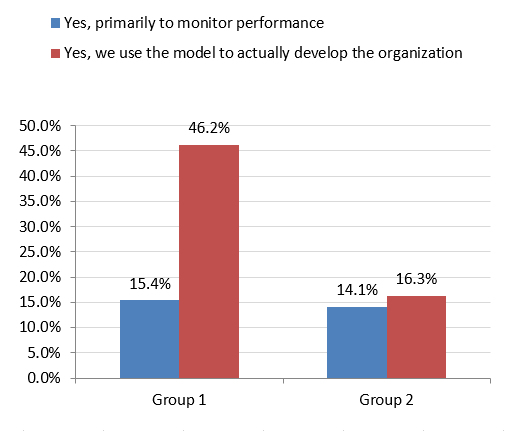
Figure 1: Using management models to develop the organization has a strong correlation with Business Analytics success. Only using the models to monitor performance does not (∆ 1.3%).
That means: developing the collective of people, systems, processes, and culture in such a way that one can speak of a higher level of organizational intelligence. Although this may improve your performance, this should be of secondary concern. Managers can push their employees very hard to try to achieve a better performance. But combined with a disciplinary culture that can lead to a decrease in performance instead of an increase.
In a development culture, the manager will discuss (disappointing) performance with employees. It will be their shared responsibility to improve the results. Together, they look for new resources, such as workshops and training courses, or a change in the process, to improve the organization. That’s how you improve performance.
What does work: use management models for their real purpose: designing your strategy and organization. This is the leadership’s responsibility. Use the term “balanced scorecard” with caution, as it may be a poisoned chalice. It can be more tactical to speak of “care maps” (in healthcare) or “policy maps” (in the public sector). Customize it for your industry or organization. Let the methodology be a guideline, not a rigid set of instructions. Use the elements that have the biggest chance of success in your organization, and don’t be afraid to deviate from the norm.
Expert opinion
“It’s not guaranteed that Business Analytics software will be a match for your organization’s primary process and strategy. One explanation for this is that analytics is sometimes based on universal models, such as the Balanced Scorecard or the EFQM. As a result, the organization isn’t driving the right success factors and KPIs in a specific instance. The performance doesn’t improve.”
Mr. Leo Kerklaan
Associate Partner
Blunder 3: Only rewarding upper management for good performance
This is a touchy subject to which the media has devoted lots of time and attention: the generous salaries and rewards at the top of organizations. Politicians call it a culture of self-enrichment and greed. This research also proves that bonuses awarded to upper management don’t positively influence the (financial) results of the organization as a whole.
In the research, we asked if the organization’s results had improved, and which employees were eligible for performance rewards. Organizations that achieved positive results proved to not only reward upper management but all employees and managers shared in the profits.
Performance rewards for everyone is a sensitive topic. The average employee doesn’t expect performance rewards. It is said to be unjust, attract the wrong types of people, and encourage short-term thinking. We’re still addicted to the payment structures of the last century, with security being the most important factor.
What does work: Performance rewards are only effective when they go hand in hand with a few essential conditions that characterize intelligent organizations. A selection of these conditions:
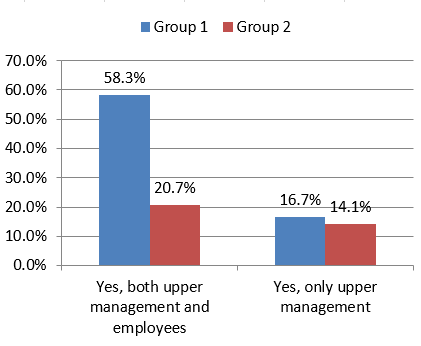
Figure 2: only rewarding upper management shows no correlation between positive (financial) results, in contrast with rewarding everyone for good performances.
- The goals have to be SMART.
- Performance should be able to be influenced to a reasonable degree by the employee.
- The employee isn’t solely responsible for results, they also have a voice in decision-making.
- They have access to sufficient resources and means to drive results.
- They have access to the management information they need to monitor performance periodically.
- Personal targets should be linked to the organization’s long-term goals.
- Good support by modern ICT.
It’s also important not to use performance management just to reprimand employees. They also shouldn’t be collecting bonuses they haven’t earned. The key is discussing both the positive and the negative results. And developing a performance management system to actually develop the organization. That means determining where you can improve, together. Where necessary you should invest in the competencies of employees, the company culture, and the organizational structure.
Expert opinion
Finally, there are some not unimportant things to note when implementing performance management:
“In my opinion, organizations should reserve this type of reward for long-term performance. When the focus is on short-term performance, performance rewards have the opposite of the intended effect. It’s wiser to first collect the biggest and most achievable advantage of performance management: increasing the focus on performance. Only when performance management and improvements have been embedded in the organizational culture can performance improvement be successfully implemented.”
Mr. Leo Kerklaan
Author of The Cockpit of the Organization
Blunder 4: Shielding people from all information
Administrative Organization measures ensure, among other things, the ability to correctly declare financial accountability and obtain an accountant’s approval. The most important factor here is who can see and edit which information. In short: shielding and securing information. This goes against the foundation of Business Analytics: sharing information, across the barriers in the organization. And striving for as much transparency as possible. The research shows that too many or too strict AO measures can have negative consequences.
 Figure 3: The above graph shows that successful Business Analytics implementations (group 1) are rarely paired with (strict) AO organization/measures. High-performing organizations (group 1) only do that 7.7% of the time. Within group 2, 38.6% is said to take AO measures (∆ -30.9%).
Figure 3: The above graph shows that successful Business Analytics implementations (group 1) are rarely paired with (strict) AO organization/measures. High-performing organizations (group 1) only do that 7.7% of the time. Within group 2, 38.6% is said to take AO measures (∆ -30.9%).
What does work: for example, let’s take a ministry where the declaration behavior of all employees was exposed by a BI solution. At first, its use was limited to managers only. When all employees gained access to the software, the total amount of money declared went down by a whopping 50%.
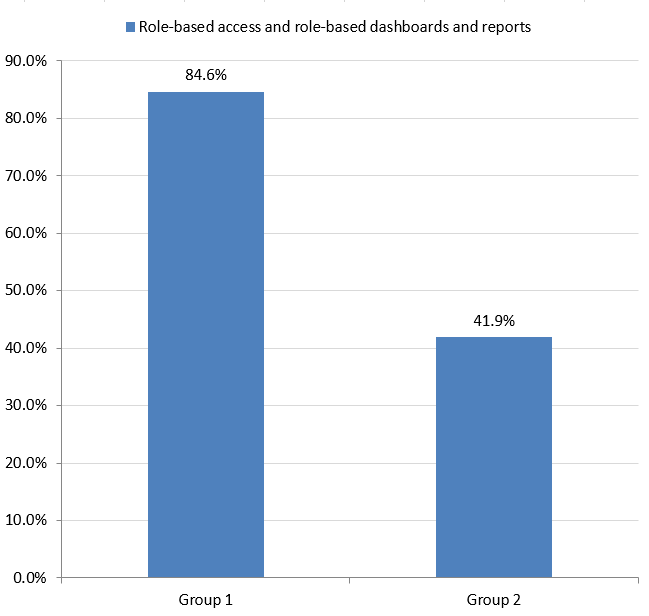
Figure 4: having reports and dashboards tuned to specific audiences and roles can have a positive effect on the success of Business Analytics.
Yet some reticence is necessary when making all information accessible to everyone, with the emphasis on “all”. Business Analytics is also meant to prevent information overload. One solution is to personalize the information and attune it to the employee’s role within the organization. We’re talking about role-based reports and KPI dashboards. In a simple system with one or two themes, the problem of information overload is less prevalent. That might make role-based systems redundant. But in the case of organization-wide BI, it’s necessary because many different themes are accessible. From sales KPIs to HR information, which can be compared to countless organizational dimensions.
Blunder 5: Not involving top management in the project
Top management’s involvement in the Business Analytics process has proven to be a vital component of its success. The difference between groups 1 and 2 consists of over 40%. Below you’ll find two practical examples.
A wholesaler of medicine started using Business Analytics. During a group meeting, one of the sales managers expressed his dissatisfaction about a specific sales report. “Why do we have to look every day? Every month is enough, right? Do we really need to get bogged down in specifics?” Fortunately, the director, one of the project’s sponsors, was also in the meeting. His reaction: “Abel, we’ll talk more about this.” He intervened when resistance arose. Abel ended up leaving the company after three months.
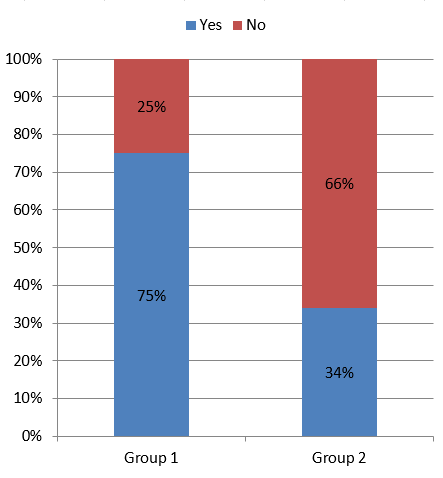
Figure 5: A graph answering the question “is upper management involved with BI?”. The “yes” category contains the answers “almost daily” and “regularly”. The “no” category contains the answers “not at all” and “hardly”.
Another example concerns Michael Dell. My colleague had lunch with an important Dell manager. During lunch he was constantly looking at his phone. My colleague asked if there was something wrong with his phone. “Around this time, Michael Dell wakes up, and the first thing he does is look at Europe’s numbers. And if he doesn’t like what he sees he calls me immediately, so I have to know exactly what’s going on.”
Business users have to play a leading role in the BI initiative. Only when they are completely behind the project can Business Analytics be truly successful.
James Richardson
Infoworld
What does work: The above examples indicate that active involvement from the top ideally comes in two forms:
- Leading the change process and the internal politics that inevitably rear their heads when Business Analytics gets involved. If that doesn’t happen, there’s cause for concern. No pain, no gain.
- Actually driving the hierarchy based on the information revealed by Business Analytics.
The conclusion and moral of the story: the chance of BI’s success without close involvement by the directors is small. If they get involved, success is infinitely more likely.
Blunder 6: Positioning Business Analytics as an internal affair
Various aspects show that organizations that achieve excellent results with Business Analytics more often put the customer and the process first. The organizations from group 1 do that primarily by implementing CRM. The difference with group 2 is almost 40,4%.
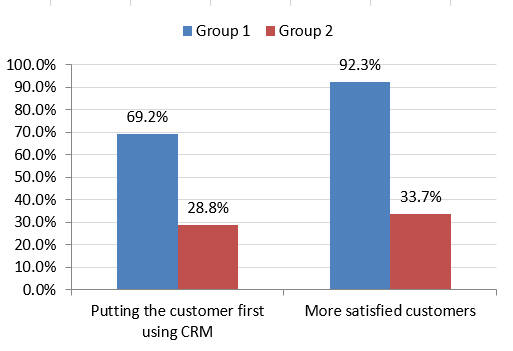
Figure 6: High-performing BI organizations more frequently put the customer first. They often use CRM to that end. Deploying Business Analytics organization-wide has positive effects on customer satisfaction.
The effect that excellent Business Analytics can have on customer satisfaction is surprising. The difference in score on the aspect “customer satisfaction” between groups 1 and 2 is an incredible 58.6%. So successful organization-wide Business Analytics can give a significant boost to customer satisfaction.
When applying Business Analytics, don’t forget to look outside of your organization at the market, competitors, new legislation, and technologies. We call this Competitive Intelligence. Organizations that are highly alert have a much better chance of using Business Analytics successfully.
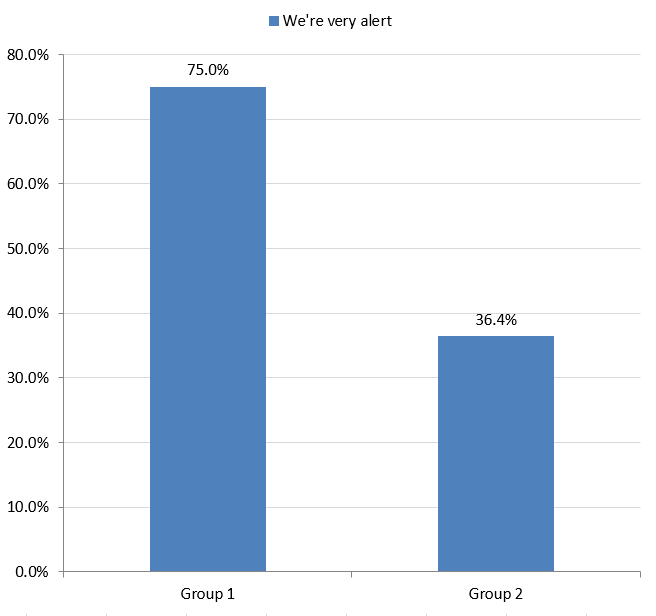
Figure 7: organizations that regularly “look outside” are typically more successful in using Business Analytics.
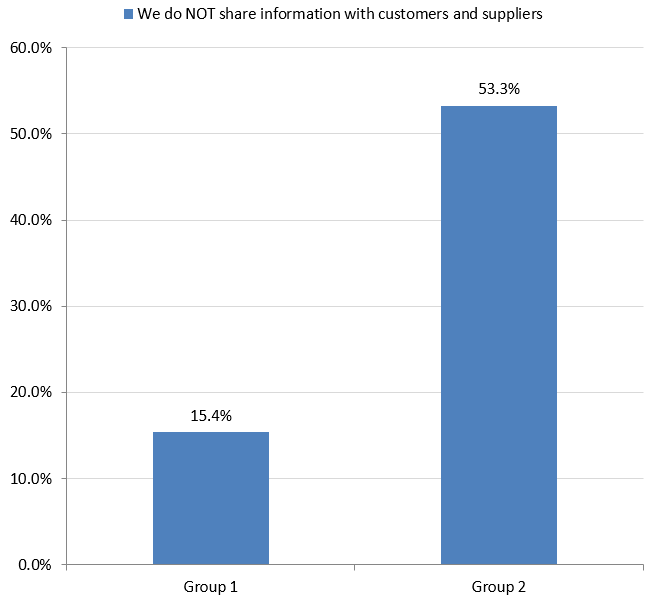
Figure 8: Organizations that want to keep information to themselves can typically be found in group 2, the group that uses BI less successfully.
“When data-driven projects don’t lead to results, the fault usually doesn’t lie with Business Analytics, but the way in which it’s treated. An analytics project can certainly deliver results, but they’re often saddled with the wrong assumptions and not results-oriented. […] Is it the fault of Business Analytics, or the parties that don’t implement it correctly and with the right results?”
Ron van der Kleij
KVL Inspiration Technology
But it can also be the other way around: Business Analytics can provide the impulse to look outside of the organization. It’s also unwise not to structurally share information with business partners such as customers and suppliers, to eventually give the customer the final say. So that they can directly access the relevant management information and back-office applications through the internet. The organization’s brainpower can be significantly increased.
Your organization won’t just be driven by a handful of managers, but employees from all levels, customers, and suppliers can also influence the direction.
Blunder 7: Not connecting Business Analytics to continuous improvement
This is the most common pitfall, and also the most crucial success factor of all. BI teams can build the greatest data warehouses, reports, and dashboards, but teams and managers don’t consistently use the information for analysis, continuous improvement, and action. Organizations sometimes just throw their money in a pit. Sometimes there are more people working in the BI department than there are daily users.
Managers and employees of organizations in group 2 are quickly satisfied when they see positive numbers. Or they get scared when their dashboard shows red. Suddenly, definitions are up for discussion again, and such-and-such factors shouldn’t be counted among them. Or they fabricate their own reports and spreadsheets that paint a rosier picture.
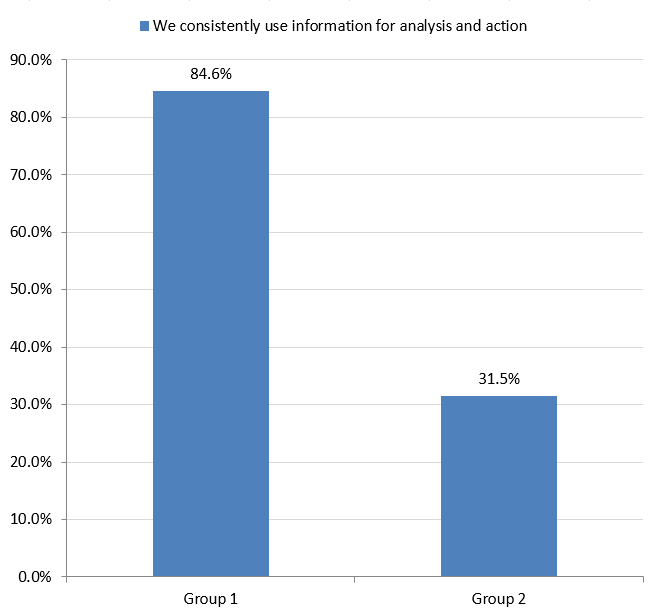
Figure 9: organizations that successfully use Business Analytics (group 1) consistently use information for analysis and action.
This is in contrast with the “excellent” organizations (group 1). They always want to know what’s happening. They link Business Analytics with the plan-do-check-act cycle and continuous improvement. They thoroughly analyze the data to really understand what’s happening, and intervene where necessary (do, see figure 9). For example, by improving the processes, adjusting the norms and targets (plan and act, see figure 10), or they enter into a discussion about the positive and negative performances (check, see figure 11) to arrive at solutions.
“Business Analytics should primarily revolve around the action that follows from the insight. Insight is good and well, but without the ability to act on that insight it’s of little use.”
Hans Groot
Computable.nl
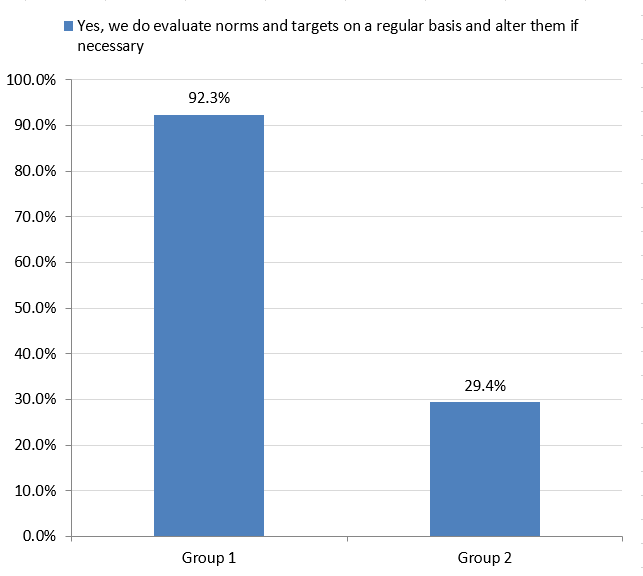
Figure 10: Regularly evaluating and adjusting norms and targets is a key success factor (Act from the PDCA cycle). Of course, you have to have them in the first place (Plan).
Performance
“Essentially, it comes down to the question: is your organization capable of learning from the information presented? The outcome of this is determined by countless (hard to measure) factors and interactions.”
Mr. Leo Kerklaan
teacher of the PDCA & continuous improvement masterclass
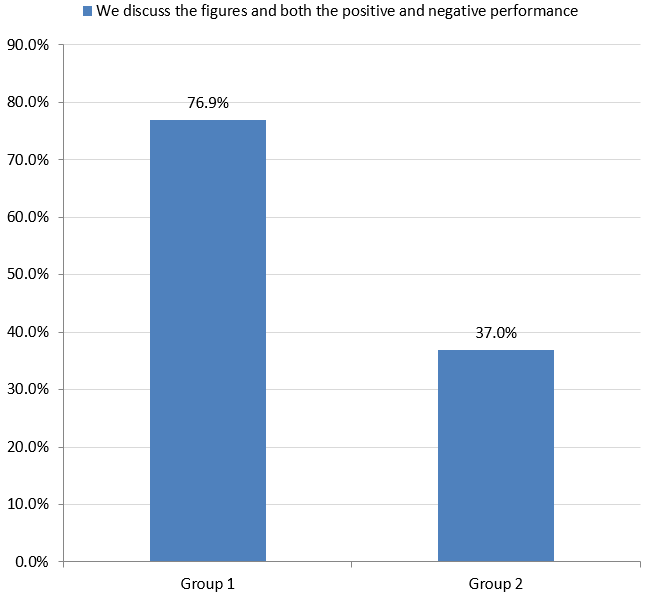
Figure 11: Discussing both positive and negative performances is of great importance to the success of Business Analytics.
Only 21% of the researched companies have an analytical company culture where information is regularly used for analysis and action, and where norms and targets are regularly adjusted and evaluated.
“I’ve noticed that most BI experts pay little attention to the behavioral side of things. That could be one of the reasons why Business Analytics so frequently misses the mark.”
John on Computable.nl
Do you want to know more about our research or discuss how to prevent these blunders in your organization? Feel free to contact us, we’d love to help you. Making organizations more intelligent is our passion.



